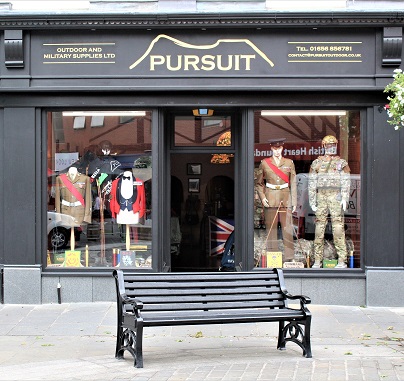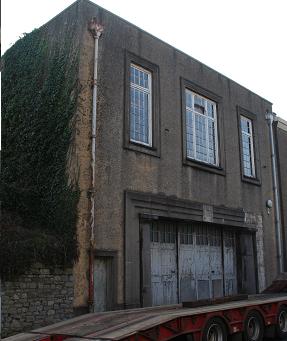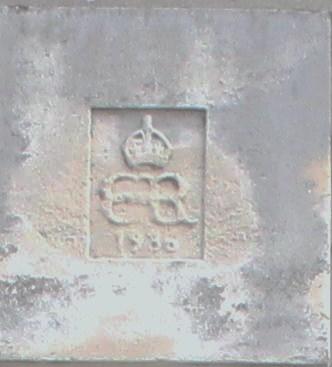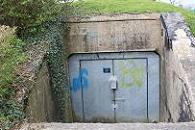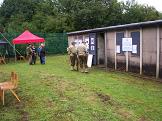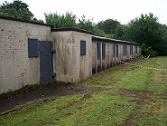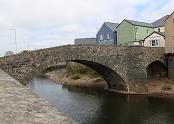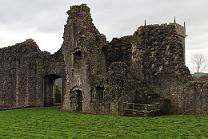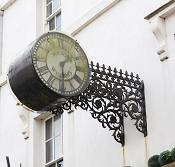A trip to the Somme
It was a typical Welsh summer morning, wet, wet and more wet as ten
members of the Bridgend Branch Comrades Association, Royal Welsh (24/41
Foot, RRW) set off from Sarn services heading
to the WWI battlefields of the
Somme. Our main aim was to lay a wreath at the 38 Welsh
Div. memorial at Mametz Wood.
There's not a lot of excitement in a long drive along the M4, M25 and on
to the ferry port at
Dover.
At first glance, the sea did not look too friendly, there was a lot of
white water breaking on the surface.
Our onward journey south through
France passed quietly and we arrived
at Longueval where our self-catering accommodation was situated.
Our first visit was to the memorial at Thiepvel. This imposing memorial,
the largest, was designed by Sir Edward Lutyens, Constructed from red
bricks and white limestone was build between 1928-32 and has the names
of 72000 UK and South African dead with no known grave.
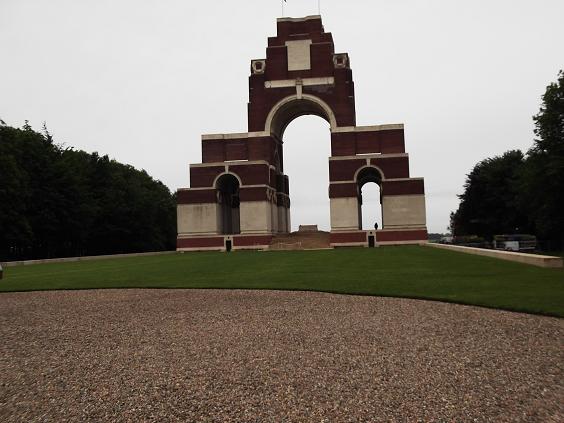
At Beaumont-Hamel is the Newfoundland Memorial. On 1July 1916, men from
the Newfoundland Regiment were decimated by machinegun fire. A network
of trenches has been preserved at this site.
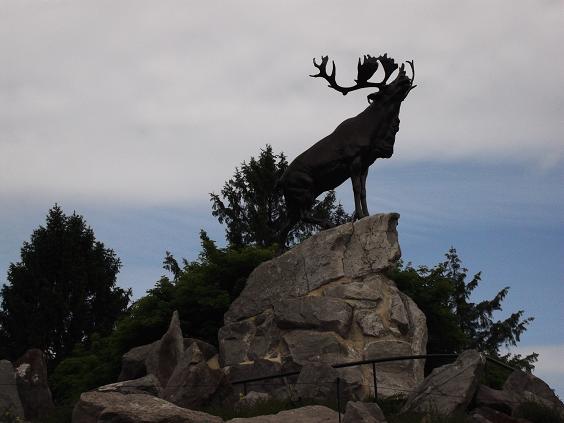
A short drive away at La Boisselle is the Lochnagar Crater which is the
site of a huge explosion that took place on
1 July 1916. The crater measures some 300
ft. wide by 75 ft. in depth.
The
Somme museum at Albert is well
worth a visit. Housed in underground tunnels with sound, light and
images one can get an insight into the daily life in the trenches.
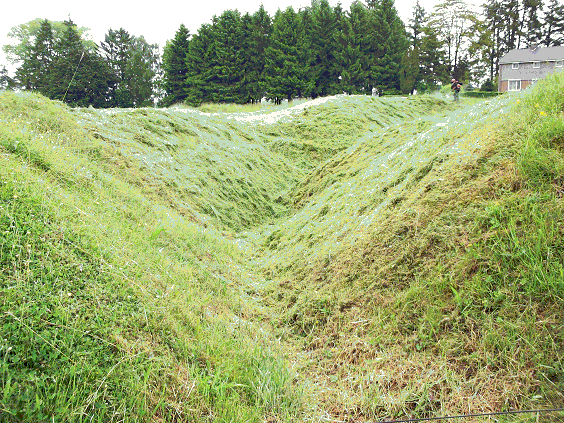
At Mametz wood near the
village of Mametz,
wreaths were laid at the 38Welsh Div memorial to commemorate men of the
Welsh Regiment, South Wales Borderers and Royal Welsh Fusiliers who took
part in this battle. In the photograph, left to right are Mel Thomas
(SWB) Tom White (SWB) Geoff Durke (SWB Standard bearer) Bill John (WR).
In the background Mametz wood can clearly be see with the open ground in
front that soldiers had to cross in front of the well dug-in German
machine guns. In total, the Division suffered 4000 casualties.
Infuriatingly, many of the British shells that had been fired in the
initial bombardment failed due to faulty shells. A short walk into the
woods showed just how dense was the undergrowth.
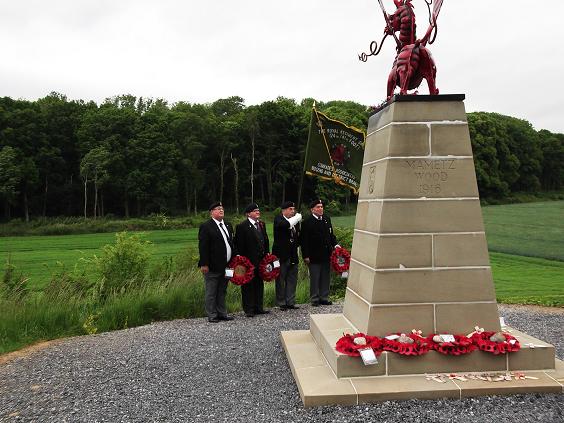
At Longueval is the museum commemorating the South Africans battle at
Delville Wood
a well presented
tribute to the commonwealth troops who also made the ultimate sacrifice.
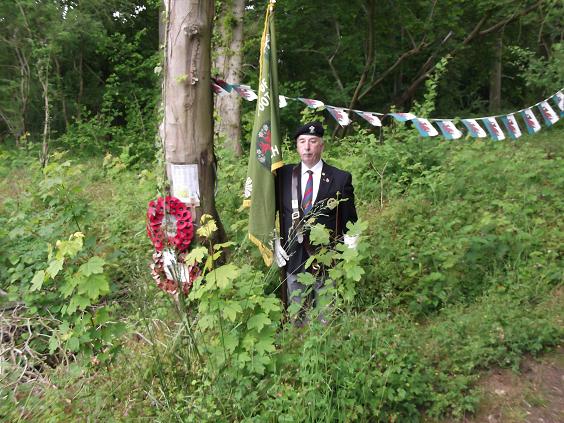
Next year is the centenary of the start of the
Somme offensive. Accommodation in the area has been
pre-booked for the last seven years. That gives an idea of the interest
shown in the event.
I'm glad we got in early and were able to explore in some degree of calm
and absorb the enormous sacrifice made by men of the 38 Welsh Division.
We will remember them.
Article submitted by Dave Davies








